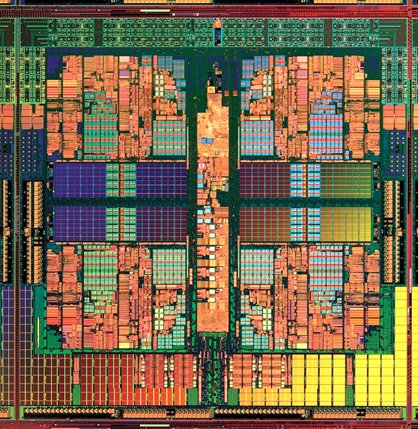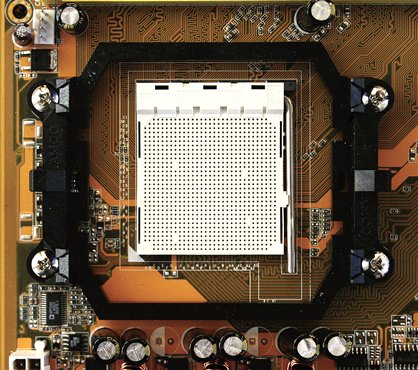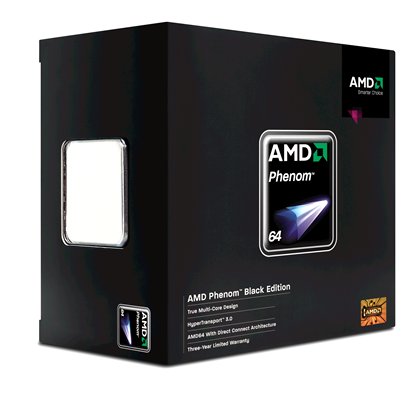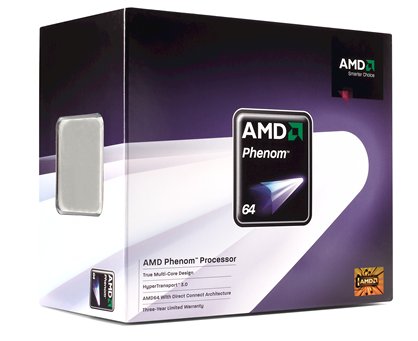The 2008 PC Builder's Bible
Find the best parts. Learn to build a rig from scratch and overclock it to kingdom come. PC Gamer shows you how

Q: How do you pronounce Phenom?
A: It’s fee-nom, not fuh-nom.
Q: What advances does Phenom offer?
A: Phenom is AMD’s first quad-core processor and is touted as a “true quad core.” Based on a 65nm process, Phenom uses an enhanced version of the stellar K8 Athlon 64 core, which features many of the same “wider and faster” techniques as Intel’s Core 2 Duo. Improvements over the Athlon 64 include the ability to execute SSE instructions in 128-bit chunks versus 64-bit. Cache speed gets a bump, as well, with L1 going from 16 bytes per cycle to 32 bytes per cycle, and L2 going from 64 bits per cycle to 128 bits. AMD also spends silicon on increased floating-point performance; a few new instructions; HyperTransport 3, which nearly quadruples the bandwidth over previous implementations; and more L3 cache.
Q: What’s meant by “true quad core”?
A: Each Phenom features four execution cores on one single, contiguous die. Architecturally, it’s far more elegant than Intel’s quad core, which fuses two dual-core chips in a CPU and forces the dual-core islands to talk to each other over the front-side bus. Phenom was designed from the get-go as a quad chip, and each core communicates at HyperTransport 3 speeds—several orders of magnitude faster than Intel’s front-side bus. All the cores can also share data stored in the L3 cache, so a core would have to reach out only to the L3 instead of the much slower system RAM in certain applications. This adds up to a chip that, on paper, seems to at least equal—if not exceed—Intel’s Core microarchitecture.
Q: Will Phenom work in my existing motherboard?
Sign up to the GamesRadar+ Newsletter
Weekly digests, tales from the communities you love, and more
A: Phenom is designed as a Socket AM2/Socket AM2+ chip and should, therefore, drop right into the majority of existing motherboards, provided the motherboard maker updates the BIOS—and didn’t screw up on the board design.
Q: Does Phenom have the same RAM issues that DDR2 Athlon 64s did?
A: No. AMD corrected the issue that limited the DDR2 Athlon 64s to whole number RAM divisors. This, in essence, would force DDR2/800 RAM to run at DDR2/766. Phenom CPUs use a separate clock for the memory controller, so memory will run at its intended speed. Consequently, however, the memory controller no longer runs at the core’s speed. The memory controller on the 2.6GHz Athlon 64 FX-60 runs at 2.6GHz. On the 2.6GHz Phenom 9900, the memory controller runs at 2GHz and notches down to 1.8GHz for the 2.3GHz Phenom 9600. It’s not clear if or how this impacts memory performance; it’s still a good clip faster than what the memory controller runs at in competing Intel machines, where that part is located in the north bridge.
Q: How well does Phenom overclock?
A: It will vary from chip to chip, of course, but Phenom is not shaping up to be a great overclocker today. We didn’t get very far with our engineering sample chip and few other reviewers have either. And when you look at how the thermals ramp up for relatively minor speed increases, it’s no wonder. Going from 2.3GHz to 2.4GHz takes the thermals from 95 watts to 125 watts. Going from 2.4GHz to 2.6GHz jumps it up to 140 watts. Older AMD and many Intel enthusiast parts have high thermal ratings but only because they’re anticipating users to overclock the hell out of them. We suspect that the increased thermals for the two faster Phenom parts are more related to AMD’s issue at the fab.

Above: AMD’s “true quad core” jams all four cores onto a single 65nm, 285mm2 die
Q: What’s the deal with AMD’s tri core?
A: The tri core is being sold on the concept that if two is good and four is great, three is a perfectly attractive middle option. AMD’s tri core is primarily aimed at people who don’t want to pay for quad core but want some additional performance at a more affordable price. The CPUs are, as you might suspect, dies that won’t pass muster as quad cores but work fine with one core turned off. While some view this as selling defective chips, AMD says it’s business as usual. In the past, if a portion of a CPU’s 1MB L2 was bad, it could be sold as a chip with 512KB or 128KB L2, with the offending portion turned off. Like the higher-clocked Phenoms, the tri cores won’t be out until later in the year—they will carry model designators of 7 instead of 9. Since they’re the same chip as a quad core but with one core turned off, you can expect performance to fall in between their quad- and dual-core brethren.
Q: Where does AMD go from here?
A: AMD’s next stop is 45nm, which it says will be online at the end of this year. There’s likely to be a shrink of the Phenom core with some enhancements to get the performance up, but AMD’s CPU code-named Bulldozer will be the next chip to truly take on Intel. Bulldozer, which is due in 2009, will be a multicore design, but AMD hasn’t revealed very many specifics. The problem for AMD is that Intel is expected to make another jump forward with its chip code-named Nehalem, which will adopt AMD’s on-die memory controller and chip-to-chip communication techniques and feature four cores per die and an improved version of HyperThreading. With two quad-cores glued together under the heat spreader, a Nehalem would have up to 16 cores (eight real, eight virtual) available to the OS.

Above: AMD’s AM2 Socket
Three recommended AMD CPUs

Phenom X4 9850 Black Edition
Phenom 2.5GHz 4x 512KB L2 Cache 2MB
L3 Cache Socket AM2+
$240

Phenom X4 9550
Phenom 2.2GHz 4 x 512KB L2 Cache 2MB
L3 Cache Socket AM2+
$195

Phenom X3 8450
Phenom 2.1 GHz 3x 512KB L2 Cache 2MB
L3 Cache Socket AM2+
$145

Choose the RAM that’s right for you
Head back to the table of contents
PC Gamer is the global authority on PC games and has been covering PC gaming for more than 20 years. The site continue that legacy today with worldwide print editions and around-the-clock news, features, esports coverage, hardware testing, and game reviews on pcgamer.com, as well as the annual PC Gaming Show at E3.


